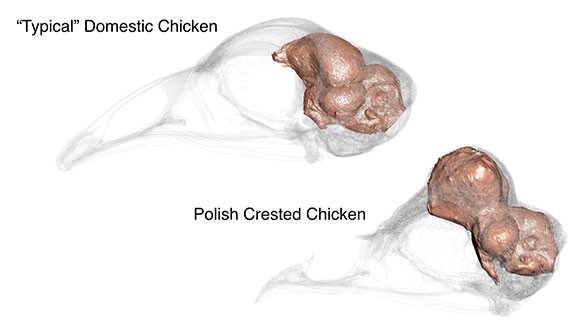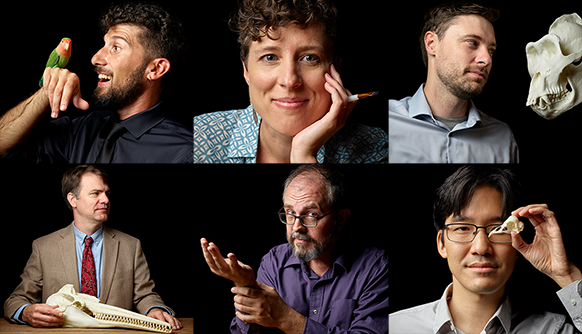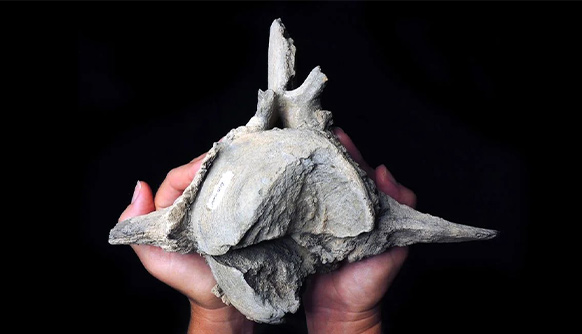Beyond the Bones: The “Tail” of an Ancient Beast
NYITCOM Associate Professor Simone Hoffmann, Ph.D., is part of a team “unearthing” significant clues about an extinct, ancient mammal.
Beyond the Bones: Brainy Birds
Assistant Professor Aki Watanabe, Ph.D., published the first study from his NSF CAREER grant-funded research project; he proposes using a domesticated chicken to study how birds—and perhaps animals in general—ended up with differently shaped brains.
Beyond the Bones: Sizing Up Thunder Beasts
Research co-authored by Associate Professor Matthew Mihlbachler, Ph.D., explores the fossil record of an ancient relative of the rhino to help explain why natural selection might favor larger animals more often than smaller animals.
Beyond the Bones: (Climbing) Birds of a Feather
Anatomy research demonstrates how birds use their tails to climb.
Annual Faculty Scholars Reception: Best and Brightest
New York Tech’s annual event was held on the Long Island campus on March 29, highlighting the academic research and scholarship over the last year.
Keeping Science on Its Toes
In a study published by PeerJ, Professor Nikos Solounias, Ph.D., and NYITCOM student Shannon Smith explain why a bony structure—which they dub “the bony cap”—may play a large role in finger and toe regeneration and nail growth.
Researchers Secure Leakey Foundation Grants
Two researchers from NYITCOM’s Department of Anatomy have secured grants from the Leakey Foundation, which exclusively funds research related to human origins.
The Thrill of Discovery
Faculty and students in the Department of Anatomy are pushing boundaries with cutting-edge research to advance knowledge in areas including animal locomotion and evolutionary biology.
Tracing Mammal Evolution
NYITCOM evolutionary biologists lent their expertise to a pioneering study that could help predict how quickly species respond to environmental changes and their capacity to evolve.
Ancient Fossil Reveals Signs of Bone-Crushing Megalodon Attack
Research co-authored by Brian Beatty, Ph.D., associate professor of anatomy at the College of Osteopathic Medicine, provides new insight into the predatory behavior of the giant prehistoric shark megalodon.
Polly Want to Climb?
NYITCOM researchers find that parrots, which cannot grasp surfaces with their wings, climb by using their head as a third “limb.”
Why Sense of Touch Varies Among Individuals
New NYITCOM anatomy research may explain why some individuals are more sensitive to tactile sensations than others.











